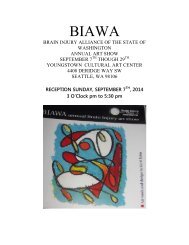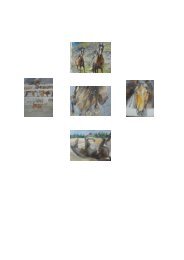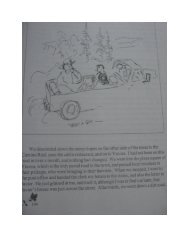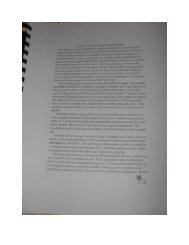International Known Artist, Carolyn Nelson, AAWA, at LOVBOTSWANA Maun, Botswana
Very brief article on teaching Card Weaving to orphaned children at an outreach ministry in Botwana, in southern Africa.
Very brief article on teaching Card Weaving to orphaned children at an outreach ministry in Botwana, in southern Africa.
You also want an ePaper? Increase the reach of your titles
YUMPU automatically turns print PDFs into web optimized ePapers that Google loves.
<strong>Intern<strong>at</strong>ional</strong> <strong>Artist</strong> teaches Card Weaving in<br />
SEPTEMBER 2014<br />
Africa<br />
VOLUME<br />
Card weaving History<br />
# ISSUE #<br />
CARD WEAVING HISTORY<br />
Card or tablet weaving is a very ancient and widespread off-loom (no loom is<br />
required) weaving method of weaving narrow bands of fabric using fl<strong>at</strong> cards with<br />
holes punched in them. Some archaeologists specul<strong>at</strong>e th<strong>at</strong> card weaving d<strong>at</strong>es<br />
back to approxim<strong>at</strong>ely 4,000 B.C. because certain p<strong>at</strong>terns which lend themselves<br />
to card weaving appear often in ancient Egyptian carvings. However, this does not<br />
seem to be sufficient evidence to support knowledge of the technique. The oldest<br />
cards found in Egypt are a set of twenty-five 4-holed wooden ones believed to<br />
have come from the Coptic Period (400-600 A. D.). Wh<strong>at</strong> is known is th<strong>at</strong> card<br />
weaving has been known from Japan, China through Asia to North African and<br />
north through Europe as far as Iceland<br />
Scandinavians have been using card weaving since the Celtic Iron Age (about 400<br />
B. C. There have been cards uncovered in Scandinavia d<strong>at</strong>ing from this time. The<br />
most important archeological Scandinavians have been using card weaving since<br />
the Celtic Iron Age (about 400 B. C. There have been cards uncovered in<br />
Scandinavia d<strong>at</strong>ing from this time. The most important archeological ooden cards<br />
which were threaded and half-woven were found. Card weaving was also used to<br />
secure the ends of yarn to a loom in Viking Age Scandinavia so very old woven<br />
fabric have card woven borders<br />
- Sonja Carlson








